If you have a garden space, are you using it to the best advantage possible?
I have a .24 acre lot. Most of my garden is behind the house. In that space, up until January of this year, I had 35 fruit trees, most of which are semi-dwarf varieties, and 40% of which are espaliered trees. My trees are of several different types so that I can have fruits ripening over many months.
One wall is covered in grape vines.
Another wall (not covered by espaliered trees) has a 1 foot wide planting space, and it is covered with blackberry vines.
I grow my tomatoes up in cages that are 5 and 6 feet tall.
I grow herbs under my citrus trees.
I know that I could still do more.
This year, I added several more blackberry bushes, including along two walls where there were none.
I added 4 large pots to my patio. I planted a pomegranate and two semi-dwarf Washington Navel oranges. The fourth pot will be planted with another fruit tree (most likely pomegranate) this fall.
I was able to redo my small front yard recently, which was previously rocks, a patch of grass, some bushes and a tree. Into that area I added 5 fruit trees, including 3 semi-dwarf Meyer lemons that will be grown as a hedge, a lime, an Early Elberta peach, and I will plant the fifth tree, a Katy apricot, as soon as possible.
The front yard will also include chamomile and caraway (grown between other white flowers). Parsley, basil, white pumpkins, sage, French tarragon, and white strawberries will line the walkway to the house. In the fall and winter, lettuce will line the walkway.
Cucumbers, garlic chives, alpine strawberries and oregano have been planted under the lemon trees. A passionfruit vine will grow on a trellis on the house. I also planted Swiss chard and will be planting more strawberries.
Despite all this, I know I can still do more to increase productivity in my garden.
Here are some things to consider to harvest more from your garden:
1. Address the shade issue
Can shade trees be removed to make more sunny garden space? If not, can limbs be trimmed to allow for more sun in the garden below?
If you have a large property and want lots of shade, and haven’t planted a garden yet, look for edible trees that will also produce shade. Here in the desert, good choices for edible shade trees include figs, pistachios, and almonds. Nut trees of all kinds are great shade trees. Semi-dwarf fruits will also provide shade without being quite as tall.
2. Grow semi-dwarf and dwarf varities of fruit trees
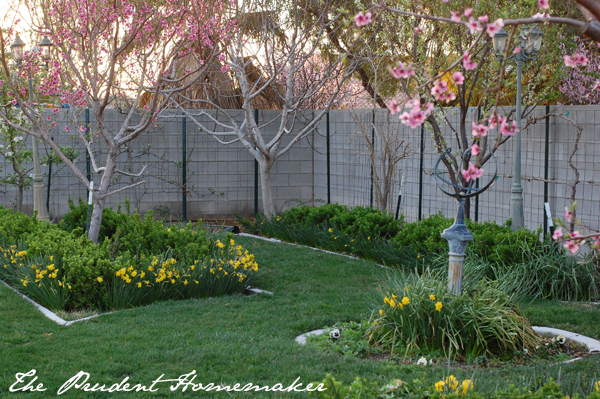 |
| Left to right: Dorsett Golden Apple, Desert Gold Peach, 20th Century Asian Pear (espaliered on wall), Mission Fig, Pomegranate, Green Gage Plum, Early Elberta peach (near blossoms). |
A semi-dwarf tree yields earlier than a full-sized tree. In addition, you can fit 5 semi-dwarf trees in the space when you would grow one full-sized tree.
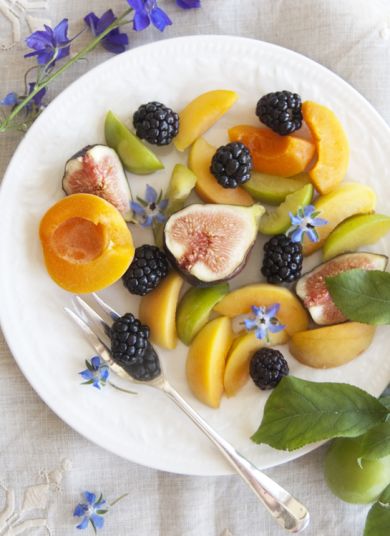 |
| Blackberries, Mission figs, Green Gage Plums, and Royal Apriocts |
3. Grow different varieties of fruit
I have two kinds of peaches in my garden: Desert Gold and Early Elberta. Desert Gold (a low-chill type) requires less chilling hours than Early Elberta (a mid-chill type), which means it ripens sooner. I pick Desert Gold peaches in May and Early Elbertas in July.
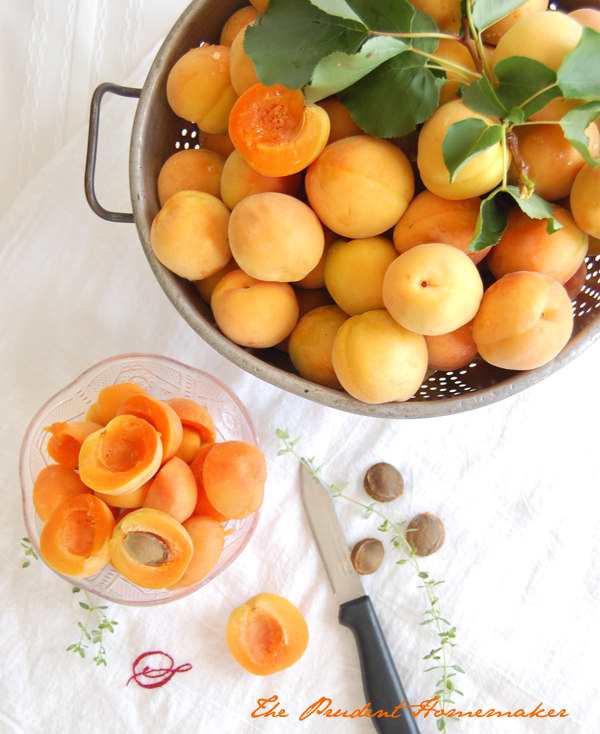
I am planting a Katy apricot in the front yard, which ripens 3-4 weeks earlier than the Royal Bleinheim that is growing in my backyard.
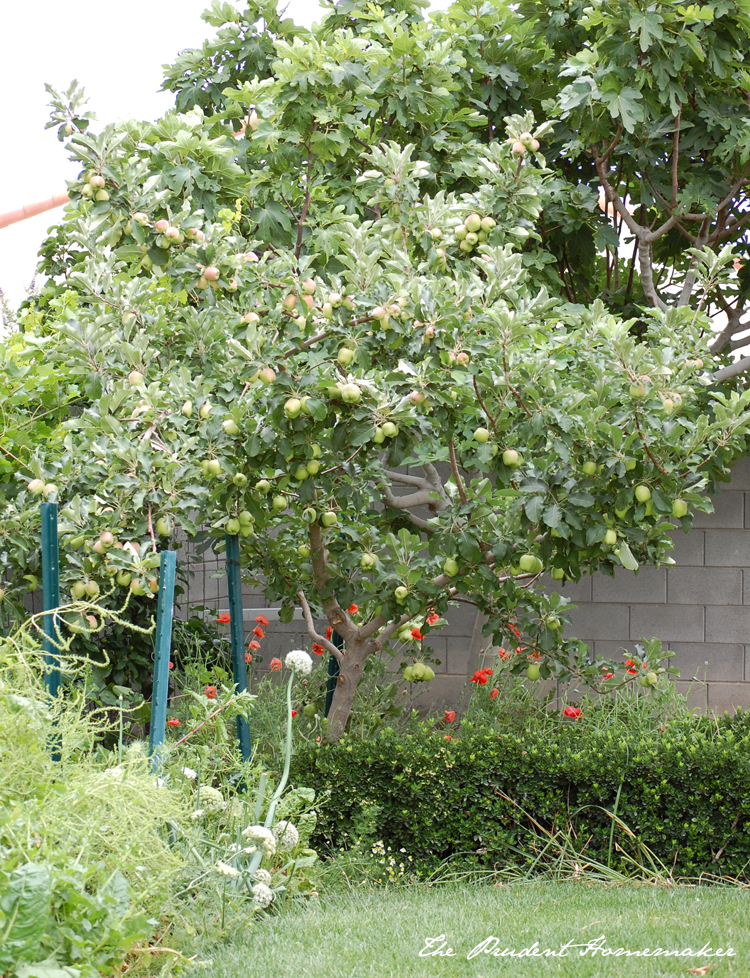
I have several different types of apples. Dorsett Golden apples are considered a “no-chill” variety. They are the very first tree to blossom in my garden in February, and they are ripe at the end of June/beginning of July. In warmer climates they can double and even triple crop! I also have several other types of apples that are ripe throughout the rest of the year.
Speaking of double cropping, Mission figs are wonderful for this. They actually try to triple crop here but are always halted at our first frost, which is typically in December (it can be anywhere from November 15th to December 15th). I already picked from these once, and they are growing again. Figs are amazing in that they fruit without flowering, which is a great help when it’s too hot for bees to leave the hive.
4. Grow up
So many things can grow on a trellis. A trellis can be attached to a wall or a fence, or even be a trellis in the back of a growing box (a great use of space for those growing on a balcony).
Some things to grow vertically:
peas
beans
cucumbers
squash
tomatoes
blackberries
passionfruit
grapes
elderberries
apples, pears, and quince as espaliered trees (these can also be grown cordoned as a fence, or grown as hedges)
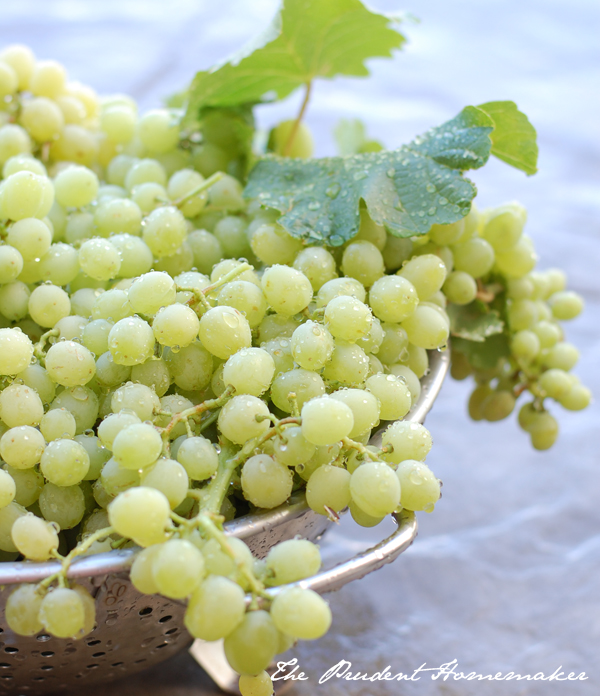
5. Grow grapes
Grapes love full sun. They’ll even grow in the 118º heat which the extra reflected heat of a cinder block wall behind them. There are types that will grow in a U.S. zone 3, types that do well in the rainy and cool Pacific Northwest, and types that grow in the desert. Find out what types grow best where you live.
I really feel that grapes are one of the best things I have planted in my garden. What we cannot eat fresh can be frozen or made into grape juice.
Grape leaves are edible and can be used to make stuffed grape leaves. They are also wonderful in soup.
6. Plant a fall garden
Most people think of spring and summer as gardening weather. If you’re not growing a fall garden, you could be getting a whole other harvest from your garden.
You don’t have to live in a temperate climate to grow a fall garden.
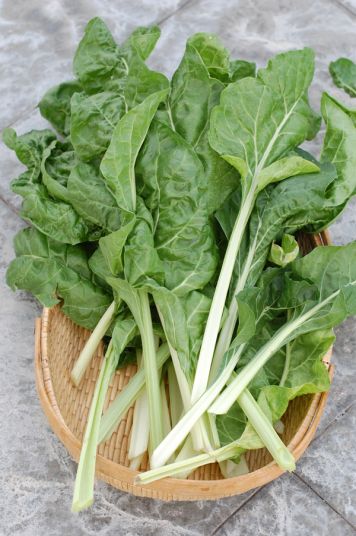 |
| Swiss chard (silverbeet) |
Fall gardens are great for all of the things you would grow in spring, including lettuce and spinach. If you cloche your plants, you can also extend the harvest. Some plants, like Swiss chard, even grow when it’s colder; Swiss chard will grow to 15º F, and can overwinter in colder areas if cloched.
For detailed information about growing a fall garden read my post here.
Territorial Seed Company (based in the Pacific Northwest) just published a great fall/winter planting guide.
Mavis at One Hundred Dollars a Month wrote a fantastic post on planting a fall garden. She’s in Washington state.
I’ve mentioned Eliot Coleman before. He gardens year-round in Maine using a greenhouse. He has written several books on the subject: Four-Season Harvest: Organic Vegetables from Your Home Garden All Year Long, The Winter Harvest Handbook: Year Round Vegetable Production Using Deep Organic Techniques and Unheated Greenhouses
and The Four Season Farm Gardener’s Cookbook
.
7. If at first you don’t succeed, try again!
If the bugs and birds eat your seedlings, plant again. If a disease wipes out your crop, try again.
It may be that you can plant the same thing in the same spot. It may be that it is later in the season, and now you have to plant something else in that space, or that you need to use that space for a fall crop. Don’t waste the space you have. Grow something!
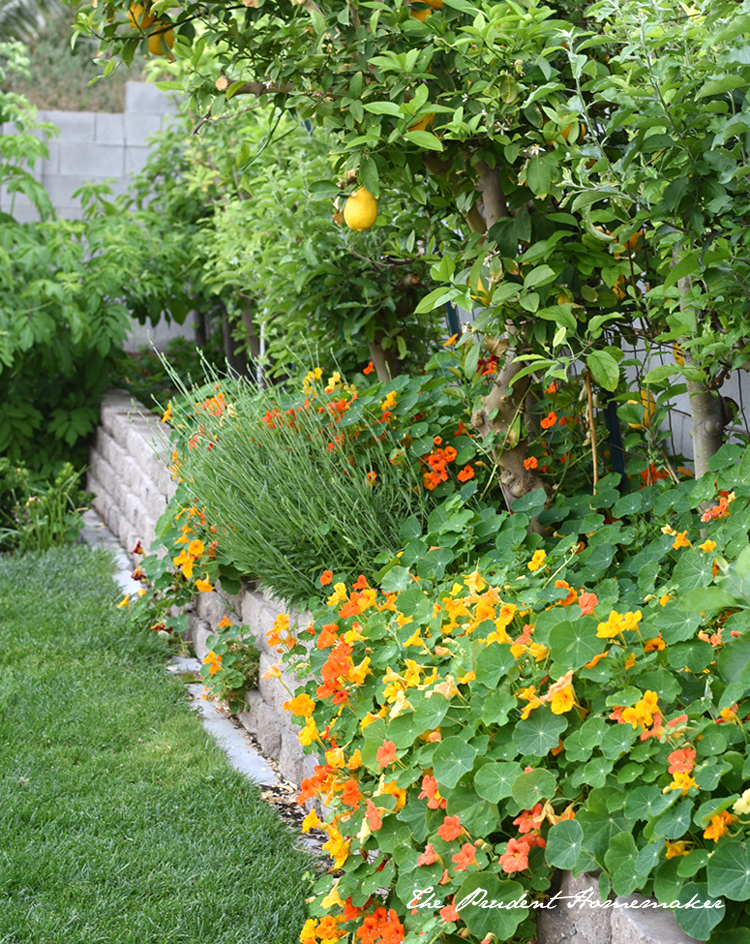
8. Plant an edible landscape
Our garden surrounds our grass on three sides. We still have a place for the children to run and play, but every bed around includes food. All of the trees in the backyard produce fruit.
The front yard will also be an edible landscape when the seeds all grow in.
I’ve written more about our backyard edible landscape here.
Check out this book for several ideas on landscaping with fruit: Landscaping With Fruit: Strawberry ground covers, blueberry hedges, grape arbors, and 39 other luscious fruits to make your yard an edible paradise.
I also have an edible landscaping board on Pinterest.
9. Increase your garden space
If you have a small raised bed, look into adding more. Don’t limit yourself to just one small garden. If you have areas of grass, consider changing some of that to garden space.
Don’t forget the front yard! It is part of the space that you have. Our non-edible front yard has been wasted space for many years. I am so grateful that we were able to change it this year, to be a source of beauty as well as food. Because it is an edible landscape, it won’t be obvious to the neighbors that I’m growing food.
10. Grow more of what costs the most
If you want to make the most of your garden, make sure to grow things that cost the most at the store.
Lettuce, Swiss chard, herbs, and blackberries are things that really give me the best return on my money. Lettuce, Swiss chard, and herbs can all be grown in containers, too!
What do you think you could add to your garden to make it more productive?

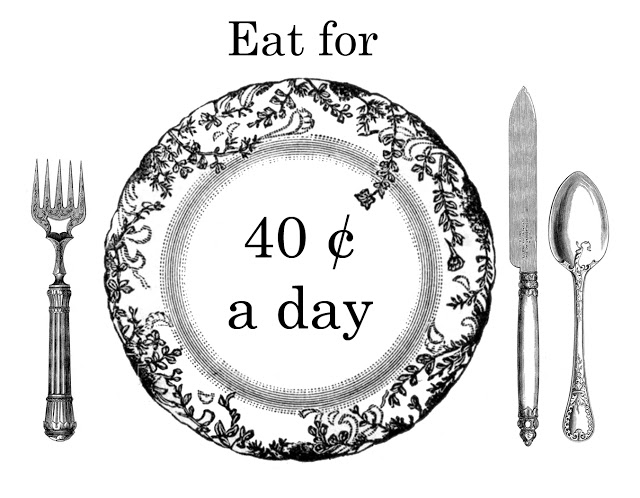
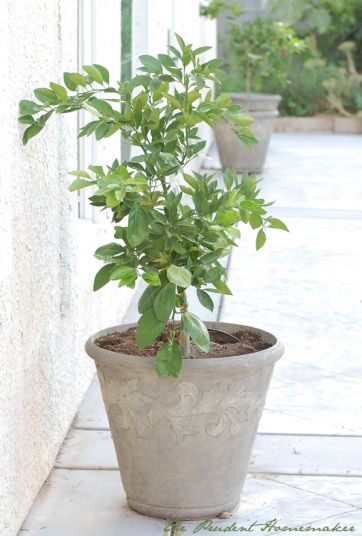

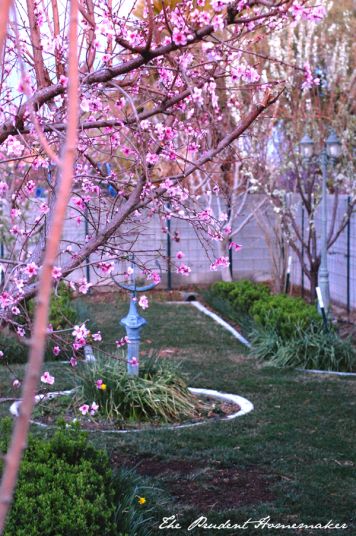
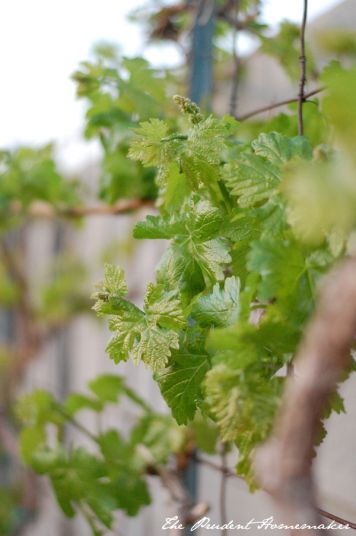
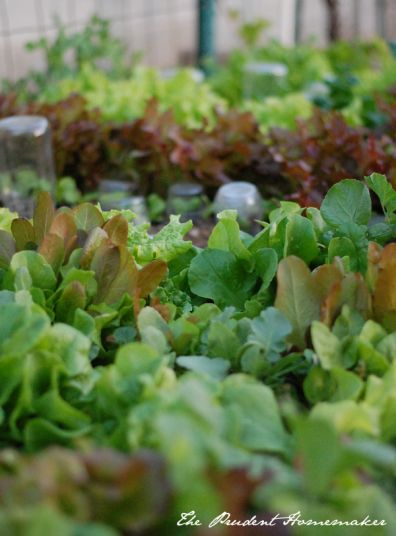
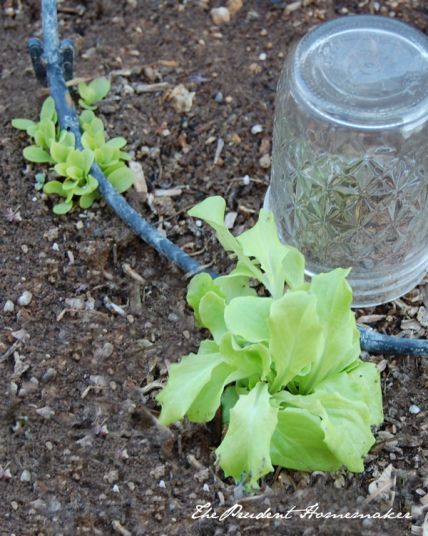
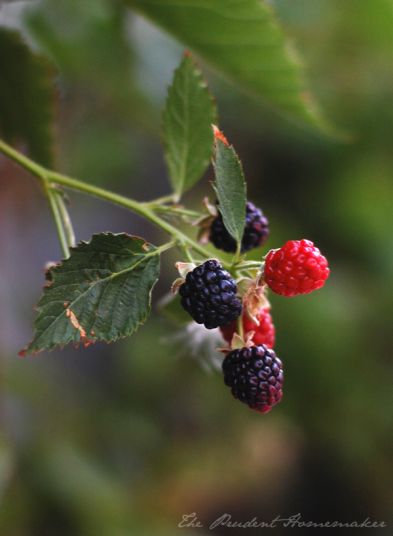

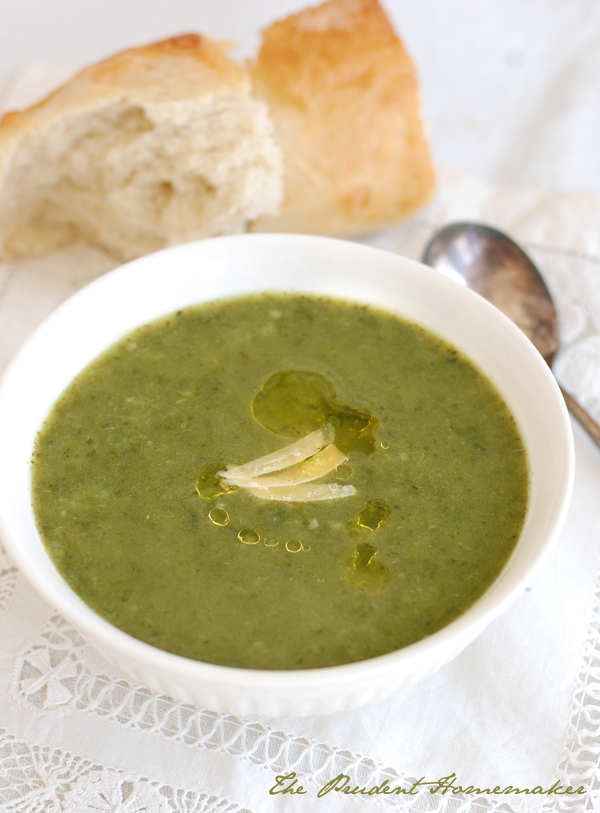

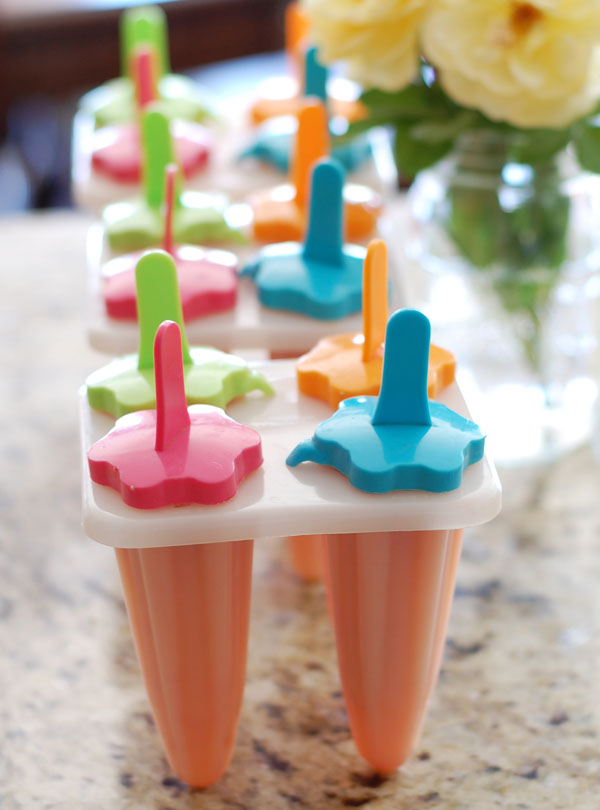
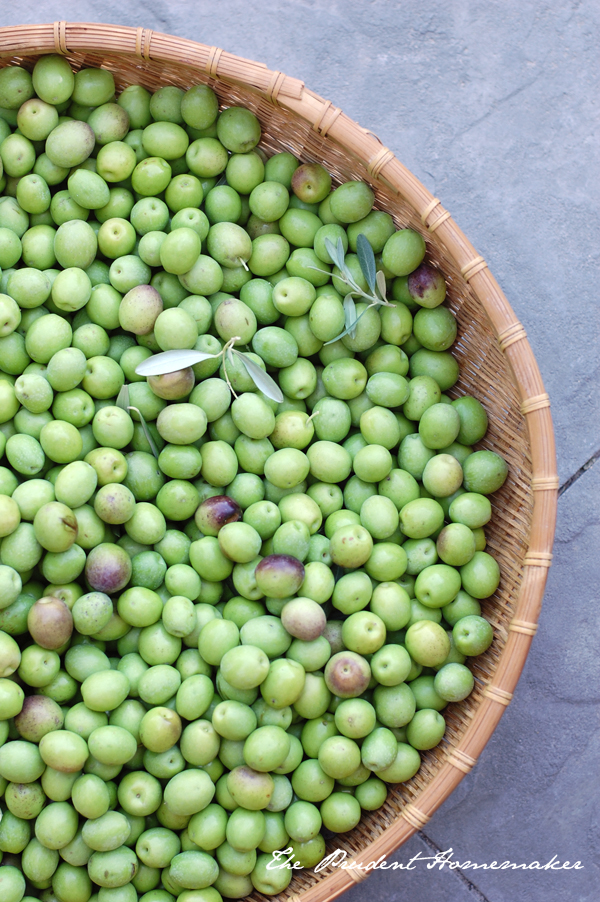
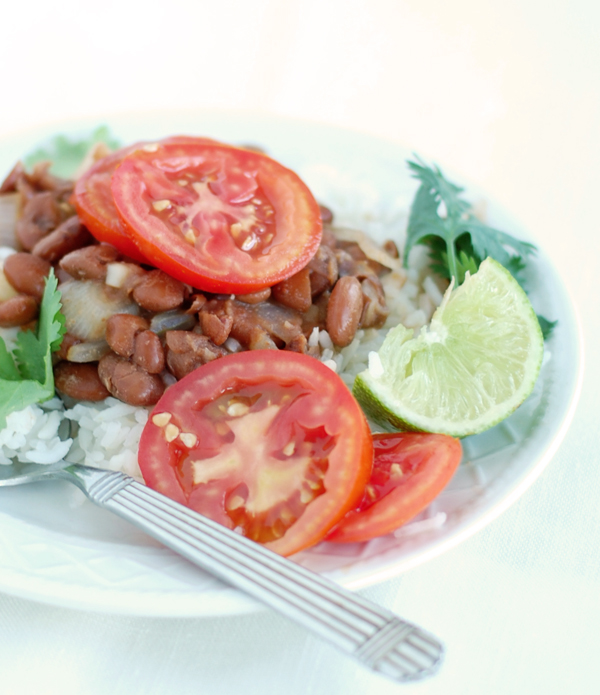
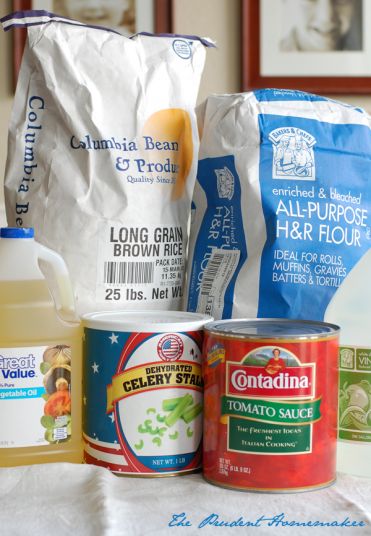
I have learned this year that less is more. We live on 5 acres, and when we first moved here, we planted about an acre of fruit trees. The problem is, they are ‘out back’, and the deer get into them fairly regularly. They eat buds and blossoms in spring, fruit at harvest and bark in the winter. We’ve had to choose a select few and protect them from the deer (and birds, and hail, and ground squirrels, and drought), and the harvest from the rest of them is iffy, at best.The same is true of our garden. We had a 1600 square foot garden, plus perennial beds and other places with plantings, and we couldn’t keep it protected from wildlife and weather.This year, we gave up, sort of, and planted only in enclosed areas. We have three…one is bout 10×12 feet, another is about 8×10 and the third is about 10×14. We can’t plant sweet corn in that sort of space, but the things we plant are protected, and we actually get to eat them. It’s much more satisfying, and uses less water too. It really feels a lot more manageable and successful. I think we’ve also finally let some things go that just don’t do well here. I’d rather have something that likes it here (like grapes) than something I have to coddle all season (like blueberries). I really appreciate the detail you’ve offered about varieties that you grow, as our climate is similar in many ways. :)-Laura at TenThingsFarm
Supposedly black tea also contains the chemical compound so you can add a tea bag to your jar of pickles. I haven’t tried this yet to see if it works without changing the flavor of the pickles.
H Strain, there is a great crab apple butter recipe on the Mennonite Girls Can Cook site. I made it last year & it is very good!
Most older recipes call for alum in the pickling mix. I believe that the Mrs. Wages pickle mixes, & the Ball mixes contain alum, but I haven’t checked lately, since I don’t use those. If a person wanted to add alum to a recipe that doesn’t call for it, I would look for an old recipe on the web that was similar to get an idea of how much to add. I don’t see any reason why you couldn’t add it, but knowing the amount to add would be a good idea to be sure 1) you added enough, & 2 ) not to waste it by adding too much.
I have some Mrs. Wages on the shelf so I will check, Marivene. My experience was that we really liked the Mrs. Wages, but they were not crisp.
One of my Australian readers says she has a real problem with kangaroos eating her apple trees, and the parrots getting her nut trees. She says the parrots will eat through bird netting.
I found an old recipe in the Meta Given’s Encyclopedia of Cooking, first published in 1947, that calls for 1/8 tsp of alum per quart of Texas Sour pickles. Another recipe from the same source calls for 1/2 tsp powdered alum per 2 quarts of Cassia Bud pickles. According to the intro under “crispness”, it reads:”Alum also produces crispness. It is perfectly harmless and in the small quantity used it does not affect the flavor, but its use is not essential.”In a bulletin from WSU Cooperative Extension in WA:Calcium and aluminum salts improve pickle firmness by combining the pectin to make the cucumber more resistant to softening. Alum (aluminum potassium sulfate) has been shown to cause a slight increase in pH and a significant increase in firmness when used at levels up to ¼ teaspoon per pint. Addition of greater than ¼ teaspoon alum per pint decreased the firmness (research done by Marilyn Swanson, Extension Food and Nutrition Specialist, University of Idaho). Alum is sold in the spice section of grocery stores. Too much alum will give pickles a bitter flavor and may cause digestive upset.From the National Center for Home Food preservation:Grape leaves contain a substance that inhibits the enzymes that make pickles soft. However, removing the blossom ends (the source of undesirable enzymes) will make the addition of grape leaves unnecessary. This same source attributes the “firming” affect of the grape leaves to the tannins they contain, because tannins inhibit the enzymes that cause softening. My grandmother is the one who told me that grape leaves contained alum, & I never had cause to question that, but she always put a grape leaf in her pickle jars, or in the crocks, & the pickles were great.
I should think so…parrots are very strong. I can see where one could use a foot and its beak to tear right through the netting. Despite all the things I mentioned above that we’ve had to contend with, we continue to garden and learn, and we really do enjoy it. 🙂
Marivene, What is the difference between a butter and a jelly or jam?
We have a very small area of sun in which we can grow a few veggies. When we bought our house 20 years ago we had old growth hardwoods that shade the entire property. These trees are very expensive to remove. When we have had to remove a tree out of necessity it has cost $850 to $2500 PER tree to have them taken down. We can buy an awful lot of food or the cost of cutting down trees. We have 2 1/2 acres that could produce a lot of food but it is all this heavily shaded.I do wish we had a great sunny garden plot but on the other hand we can go out into our shady yard in the heat of the summer and be cool. I applaud you for your productive landscape! You have done a great job of making the most of what you have!
I always put in the grape leaf and the alum, per my grandma’s instructions. Funny how everyone has their own way of doing it. I guess my family’s was to cover all the bases:) My husband’s aunt swears that you must use apple cider vinegar in dill pickles to keep them crisper. Who knows….. I notice that if I use small pickling cucumbers that are freshly picked, I get a crisper pickle.
I have really enjoyed this series Brandy. I love to read what everyone has done and how things worked or didn’t. Thank you so much!I can do a lot better than I am. This year has been strange for us. Between the heat, a couple of broken sprinklers at critical times and other necessary distractions, I have so much room for improvement. But, my 4 in 1 apple tree is in a pot waiting for a home when things cool down a bit. Another pear tree is in my herb garden and doing well. I still need to get a frame for it to espalier it. I also have a grapevine waiting to go in place of one that died, but my other grapes are doing well, one is spectacular and I might get fruit next year. My neighbor let her grapes climb our fence and they are down to the ground on our side and trailing along my yard. So I have a lot of grape leaves to eat too. (and maybe some grapes)I have planted 2 serviceberries, one in my front yard, and one in my backyard for shade, but the berries are edible and I hear they make good jam as well, so when they mature we should get some fruit from them also.I need to get my fall garden planted. We will start that tomorrow. I have a new bed started in my backyard, but nothing is in it. I need to plan it and plant it this fall. I put a small circular area that extends from the main bed and I wanted to put a fruitless weeping mulberry in it and brick in underneath it as a play place for my children, so they could have ‘tea parties’ and such while hiding under the branches. Maybe I should rethink my tree choice. I had hoped to put a couple of espaliered trees in the main bed. I have given up on filbert trees for this bed as they take up to 8 or 9 years before they produce. I also have a peach tree in my little orchard that is beyond sad. It just doesn’t grow, the leaves are always yellow, the peaches are bitter if they grow at all. I need to remove it and throw the dirt in the trash and fill in with some better soil and a fruit tree that can handle our soil. None of my other trees do what this one does. Nothing I have done helps the tree. I’ve given it 5 years so it is time to be done.I could do so much more. But one step at a time right?
Regarding berries and cold climates: honeyberries do very well in interior Alaska, surviving temps of 60 below. This year it snowed on May 18 and we still ate berries by July 15.
Before you dig out that peach tree, try giving it some chelated iron for the yellowing, then prune it back severely, removing at least 1/3 of the wood. This can be done now. Spread grass clippings around the base of the tree & sprinkle some coffee grounds over top of them. The acid from the coffee grounds will trickle thru when the tree is watered. If those steps don’t fix the problem, you can always dig out & replace the tree later.Chelated iron is what is used on trees with yellow leaves, where the soil is not acidic enough for the tree to absorb iron from the soil. The grass clippings as mulch will help hold in moisture, & as they break down, will add humus to the soil. The coffee grounds will help move the soil from alkaline towards neutral, and peach trees only bear (good) fruit on new wood from the previous year. If your peaches are always bitter, then the tree needs pruned badly, it is trying to ripen more fruit than it is able, so you will need to severely thin the peaches when they are small & green. I only leave one peach per branch, & often remove 5-6 per branch. If you can save the tree, you will save the 3-4 years waiting for a new tree to grow old enough to produce.
Wire hardcloth bent into a half circle over our strawberry bed has kept the birds & all the “critters” out. I think it would probably keep deer out, too. I just unrolled the hardcloth fencing, & then bent it lengthwise, fitting it between the fence & the lip of the raised bed. To pick, I lift the end by the lip of the raised bed. At the end of the season, I lift it off, roll it back up & put it in the shed until next year, which lets me weed & mulch to berry beds before winter, or in early spring before I put the cover back.
Jelly is made from only the juice of the fruit, with pectin & sugar (usually white sugar aka sucrose), & cooked to the jelling point where the mixture “sheets” from the spoon instead of dropping off in single drops.Jam is made from crushed fruit, sugar (usually white sugar) & pectin & cooked to the jelling point.Butters are made from crushed (or pureed) fruit (like unsweetened applesauce or pear sauce), that is slowly cooked down until it is thick. No pectin is added, & the amount of sugar added is up to you. Some people add a lot, others add a little, & a few add none. As the fruit cooks done, the fructose found naturally in the fruit is concentrated, and the mixture gets sweeter as it thickens. Some people also add spices to butters, but less is more there, & they should be added near the end, since otherwise spices can become overwhelming as the butter concentrates. I make mine in a crock pot on low with the lid propped open. Super easy – just stir whenever you think about it or pass the kitchen – maybe once every couple hours or so. All 3 are processed in a boiling water bath for 10 minutes plus whatever altitude adjustment applies.
Just for fun, you might try raising some lettuces in the shade in the hot part of summer. We have ours growing in a plot that is enclosed and covered with a shade cloth and it’s very happy there. Actually, we have carrots there too, as well as some kale and spinach, and they are all doing quite well. It might be fun to try and see if it works! 🙂
I can do lettuce in the spring before the leaves are on the trees. This year we had a fairly good crop of lettuce! I have never done a fall crop but I am going to try that this year. It is way to hot here to grow lettuce in the summer although I sure wish I could. I do have 4 pots in a window of sun on my deck. We have harvested a number of cherry tomatoes, about 6 smallish regular tomatoes and 3 cucumbers. My pepper plant is loaded with peppers so that may be the real success. I am not sure I will have saved anything at all with my small harvest but it has been fun to try and watch. Thanks, Laura 🙂
HStrain, we are in WI and our weather is like yours. We don’t plant til Memorial Day weekend. It’s a rush to get it all in and ripened and processed in just a few months. Sometimes almost like Little House in the Big Woods here.
I wish we could grow figs. I love them dried. The only cookies we buy pre-made are Fig Newtons. Do know of any homemade fig newton recipes?
I have tried the chelated iron, I’ve tried an ironite/sulfur mix. I’ve tried spraying it with liquid iron that was supposed to help. I would dig where the sprinklers were at the time so the water would trickle down past the iron. I’ve kept it pruned and sprayed for health, but it doesn’t even seem to want to grow. We put it in at the same time as all the other trees and this one is still maybe 5 feet tall and it may try to grow as many as a dozen peaches a year. Our other trees are growing quite well.I’m just ready to throw my hands up.I think you live very close to me. Maybe even the same city. So I would have to fight you for the coffee grounds! LOL(and Brandy, I figured out what that unknown google thing was. Got that fixed.)
Well, we have quite a large property. We’re in the country, fields all around. We don’t farm, it was all family property but the fields are still active fields…soybeans, corn, sweet corn, alfalfa, etc. We live in not the oldest house but the 1920’s house. The oldest house is from 1860’s. We all live on a private road and all descendants of the original immigrants. The fields are farmed now by cousins that have taken over 2 smaller dairy farms (Brown Swiss cows) from relatives and they work together. So between all the ‘homesteads” there are five, we share machinery, help with harvests, etc. We have a pond, stream, we have root cellars, well established gardens, fruit trees etc. So in that way we have not had to pour so much work into building up, that was done by those who came before us, but we want to preserve what we have for the next generations.My own situation, we are actually downsizing some. Don’t need to grow as much to get through the year.Our main garden is down a hill behind the house and it is difficult for me to get there so I have increased what I grow on the patio and around the patio. That is where the herbs are, container tomatoes and a variety of peppers. We have a pumpkin patch, a couple melon plants (Pride of WI is very good as you mentioned). We have an asparagus bed, a row of rhubarb plants. There is a raspberry patch. Other fruit on the property (shared) includes gooseberries and red currants, concord grapes. We have a choke cherry tree, service berries, yellow delicious, Empire and Rome apples, one family is doing well with plums and I hope to be able to get some of those this year. I seriously want to make that plum sauce. Oh, hickory nuts trees and black walnuts. It’s nice to know what everyone grows…for example I don’t grow Brussels sprouts but I know I can get some when needed. Second cousins are looking into taking over the egg farm down the road from an older couple…it’s a small operation, not one of those massive factory farms. I know my oldest daughter and her husband would like to take over our house in the future. There is a smaller house we could move to and all on one story. They want to add goats and do milk and cheese.I love reading what everyone is doing. Brandi, I am amazed that you can grow cranberries there. I just associate them with bogs and lots of water. I think WI is the largest producer of cranberries, by the way.County fair is starting soon. 4H always kept us busy.
I live in Utah County, south of Provo. There are two Starbucks available, so no shortage of coffee grounds. Plenty for all.
There are also some super dwarf varieties that can be grown in large pots.
If you ever have a spare moment, would you please consider doing a post on how your trellises are put together? It looks like concrete wire panels and those green stakes you can buy at Home Depot, but how are they connected and how are they pounded into the ground?Also, a random food tip: See if there are any beekeepers in the area who would split the honey with you if you let them put a beehive on your property. Beekeepers can only keep so many hives on their own lot before the bees max out their local forage. I know a hive would LOVE living in your garden, and your garden could benefit from the pollen, plus…honey!Thanks for all the wonderful tips and beautiful photography!
I am a forager by nature and love gardening. I live alone in a neighborhood that enjoys all my left-over veggies and excess jams and jellies. I’m happiest in the garden and kitchen. I raised my family in a mostly vegetarian life style. Gardening in Alaska for 30 years, the desert in Arizona and now the northwest has been the best learning experience. Animals, birds, bugs and weather!! Nature is a formidable foe. I love this site for all it shares!